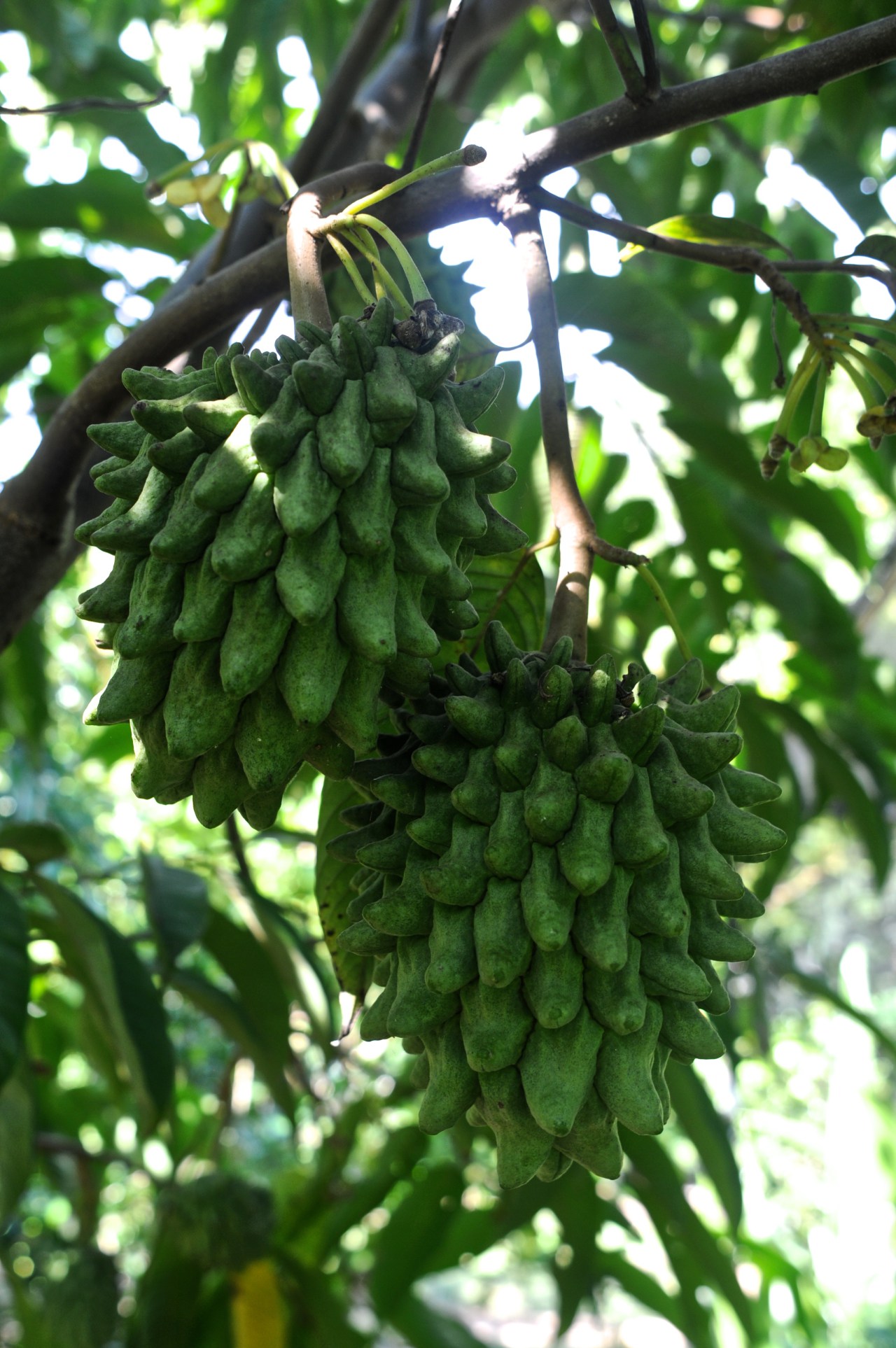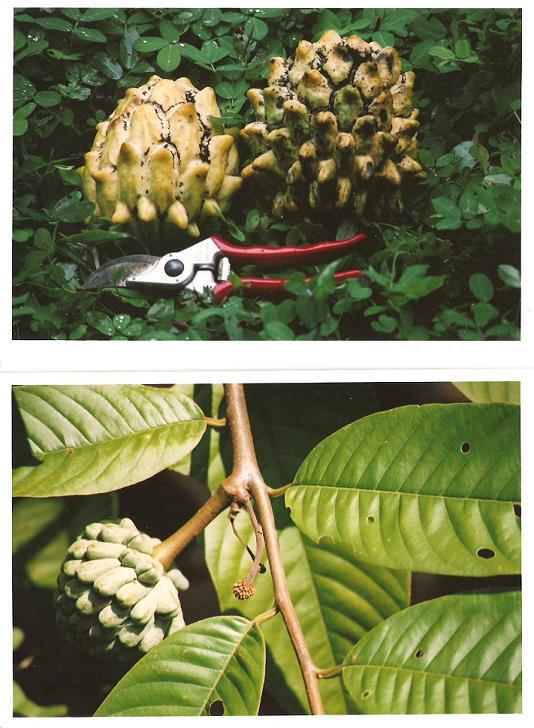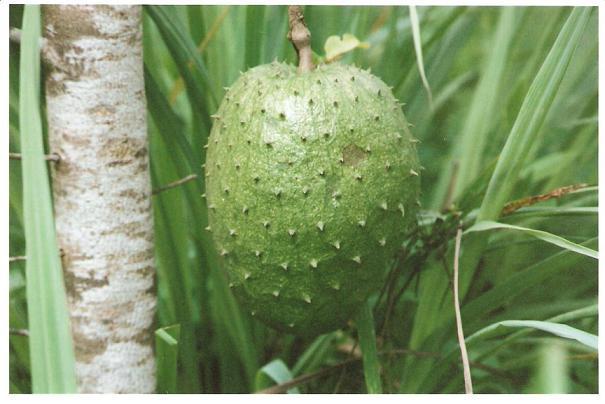DESCRIPTION, ORIGIN AND DISTRIBUTION
Stelechocarpus burahol is closely related to such species as guanabana (soursop), Biriba (Rollinia deliciosa), Paw-Paw (Asimina triloba) and Ylang Ylang. Burahol (kepel fruit, or keppel apple) is a rare and endangered member of the Anonaceae family, originating in southeast Asia, more specifically Indonesia where, it is said, cultivation is unfortunately becoming less and less common. The tree has been introduced into Honduras and Florida. In Indonesia the fruit is the object of investigation for eventual use as a perfume.
The fruit is born on the trunk of the tree. They take a while to ripen. You know the fruit is ready to harvest when you peel away some skin with your nail and it is orange underneath (rather than green). I have found one mature, productive tree growing in Panama, where it seems to do very well. Despite this it is by no means commonly grown. Whenever I have the opportunity, I collect and propagate seed.
The tree grows up to 20 meters tall, with a straight trunk, brilliant foliage, spectacular bright pink leaves that flush out all at once over the entire tree.
Pinkish cream colored flowers bloom in abundance directly out of the truck and develop into fruits the size of a small orange. The fruit has a brown, leathery skin and contains numerous, l0ng, oval seeds in a creamy, light orange flesh.
USES AND ETHNOBOTANY
Kepel fruit is edible and of a very agreeable flavor, aromatic, with undertones of coconut. It is said that the consumption of this fruit will perfume ones excretions (such as urine or sweat) with the smell of violets.
The Kepel tree is considered to be one of the most beautiful of all tropical ornamental/fruit trees.
PROPAGATION AND CULTIVATION
Kepel fruit grows in a hot, humid climate and can be planted at sea level, up to 300 m. It is propagated from seed, which typically germinate quickly, but can take up to 12 months to develop the seedling shoot. The tree will begin to bear fruit in around eight years and produces year round.
I am curious if there has been any success grafting this species? Any comments to that effect would be greatly appreciated.










